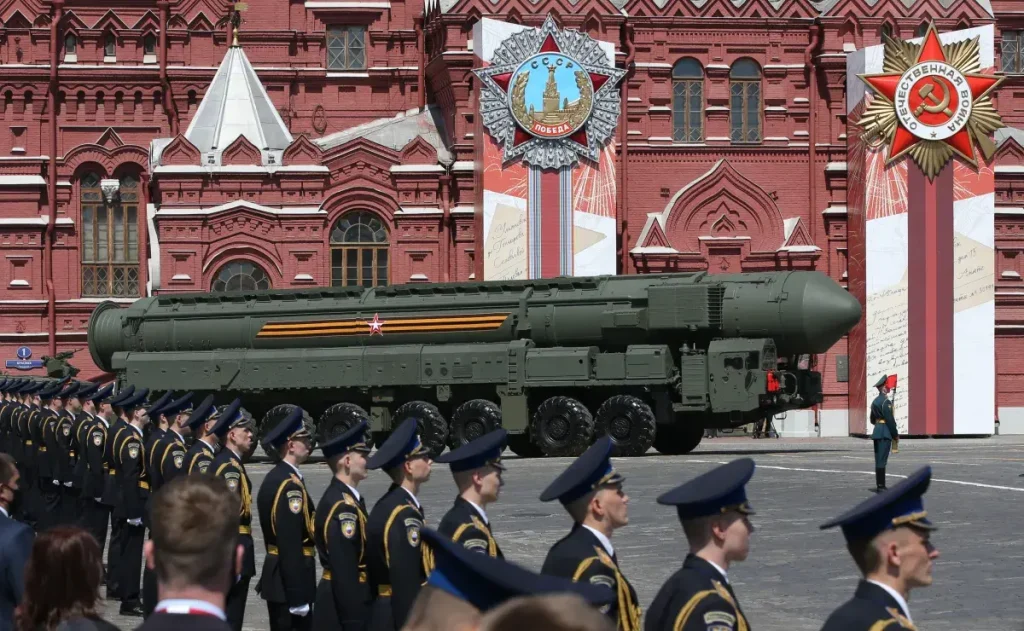Russia’s Arctic Buildup Raises Concerns in the West
In a concerning development for Western nations, Norway’s Defense Minister Tore Sandvik has revealed that Russia is significantly reinforcing its military presence in the Arctic Circle, including the deployment of nuclear weapons aimed at the United States. Speaking to The Daily Telegraph, Sandvik detailed how Russia continues to expand its capabilities on the Kola Peninsula, home to “one of the largest arsenals of nuclear warheads in the world.” These weapons, according to Sandvik, are positioned to target not just Norway but also the United Kingdom, Canada, and the United States. This military buildup comes at a time of already heightened tensions between Russia and Western powers, with the war in Ukraine showing no signs of abating despite mounting Russian casualties estimated at one million soldiers according to Norwegian intelligence.
The strategic importance of Russia’s Arctic presence cannot be overstated. The Kola Peninsula hosts Russia’s Northern Fleet, established in 1733, which continues to receive modern upgrades despite the significant military resources being directed toward Ukraine. “Even though Russia is not able to win in Ukraine, the threat of nuclear warheads and second strike capacity from up here makes them a superpower still,” Sandvik explained. He specifically highlighted Russia’s recent military developments, including a new frigate and multi-role submarine introduced in just the past two years. Perhaps most concerning to NATO is Russia’s testing of advanced weapons systems in the region, including hypersonic missiles, nuclear-driven torpedoes, and nuclear warheads. Norway, as Sandvik noted, serves as “the eyes and ears of NATO in this area,” closely monitoring these developments.
In the event of a conflict with NATO, Russian strategy would likely focus on controlling crucial maritime chokepoints. Sandvik explained that Putin needs to establish what military strategists call the “Bastion defence,” controlling the Bear Gap between Svalbard and mainland Norway to ensure the effective deployment of Russian submarines and the Northern Fleet. Simultaneously, Russia would seek to deny NATO allies access to the GIUK Gap – the strategic waterway between the UK, Iceland, and Greenland. This strategy reflects the continuing importance of Arctic naval power in Russian military thinking, preserving a Soviet-era approach to regional security that prioritizes securing second-strike nuclear capabilities through submarine deployments.
The Arctic has long been an arena for military competition between Russia and Western powers. As early as the 1950s, American military planners collaborated with Canadian counterparts to establish radar systems in the far north designed to detect incoming Soviet attacks. The Soviet Union’s decision to base its Northern Fleet on the Kola Peninsula was motivated by similar strategic considerations, establishing a pattern of nuclear submarine patrols beneath the Arctic ice that continues to this day. The region’s strategic significance has, if anything, increased in recent years as climate change opens new shipping routes and access to previously unreachable natural resources, adding economic dimensions to what was once primarily a military rivalry.
This Arctic buildup occurs against the backdrop of deteriorating relations between Russia and the West following Moscow’s full-scale invasion of Ukraine in February 2022, described as the largest European conflict since World War II. Recent developments have only deepened this rift, with President Trump announcing he didn’t want a “wasted meeting” with Putin in Budapest after the Russian leader rejected American and European demands for an immediate ceasefire. The United States has also introduced new sanctions targeting Russian oil giants Rosneft and Lukoil, further straining relations. Meanwhile, the human cost of the conflict continues to mount, with Ukraine suffering a mass drone attack on Wednesday that killed at least seven people and struck energy infrastructure alongside what Ukrainian President Volodymyr Zelensky described as “ordinary cities.”
Looking ahead, there appears to be little prospect for improved relations between Russia and Western nations in the near term. Moscow shows no indication of ending its war in Ukraine, ensuring that tensions will remain high, particularly if Kyiv gains access to more advanced Western weapon systems such as Tomahawk missiles. The Arctic will likely continue to serve as a critical theater for this rivalry, with Russia maintaining and potentially expanding its nuclear capabilities in the region as a counterbalance to NATO. Norway’s role as NATO’s northernmost European member gives it particular significance in monitoring these developments, with Sandvik’s warnings highlighting the continuing strategic importance of an area that, despite its remoteness, remains central to global security calculations. As climate change transforms the Arctic landscape, both literally and geopolitically, the region’s military significance seems poised to grow rather than diminish in the years ahead.













